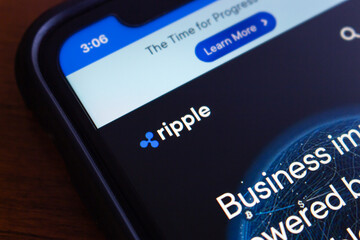Ripple and the XRP Ledger (XRPL) have taken a significant step toward institutional adoption with the launch of its Multi-Purpose Token (MPT) standard. Designed to simplify the tokenization of Real-World Assets (RWAs) and offer built-in compliance, the new token standard aims to position the Ripple’s XRPL as a go-to network for secure, high-volume institutional finance.
About The Ripple XRP Ledger MPT Standard
Dr Martin Hiesboeck, Head of Research at Uphold, took to X social media on Friday to announce that the XRP Ledger has officially activated the MPT standard on its mainnet. The MPT standard is a protocol-native fungible token designed to streamline the issuance of RWAs and institutional-grade instruments on-chain.
Unlike traditional token standards that rely heavily on custom smart contracts, Hiesboeck says that MPT integrates core control features into the Ripple’s XRPL protocol. He explains that this approach mitigates the risks and complexities associated with smart contract development, offering a secure, battle-tested foundation that is particularly appealing to regulated institutions.
The Uphold executive also stated that MPT tokens come with built-in critical compliance features for regulated entities, including “granular asset freezing” and “fund clawback” mechanisms, which allow issuers to react instantly to sanctions, fraud, or operational errors. He highlighted that the tokens incorporate advanced access control through Decentralized Identifiers (DIDs) and credentials, ensuring that only authorized KYC-verified participants can hold and transfer assets.
By embedding these capabilities at the protocol level, Hiesboeck noted that MPT reduces the need for high-cost coding, audits, and additional regulatory capital allocation, effectively lowering operational risk while accelerating adoption.
In terms of regulated settlements, Hiesboeck states that the MPT standard is designed for high-throughput financial operations, leveraging XRPL’s core strengths of fast transaction speeds (3-5 seconds) and extremely low, predictable fees in XRP. The Uphold executive reported that the protocol enforces transparency by automatically burning tokens returned to the issuer, effectively maintaining an auditable circulating supply.
He also stated that MPT supports native metadata standards, such as XLS-0089d and the Actus Standard, enabling tokens to function as digital contracts with machine-readable terms. Hiesboeck said that this facilitates a smooth integration with external financial risk and valuation systems, allowing MPT to function as a true digital contract while creating a robust environment for institutional adoption.
Implications For XRP’s Utility And Investors
Moving forward, Hiesboeck stated that the widespread adoption of MPT or RWA tokenization, a market projected to reach trillions of dollars, will directly impact XRP’s utility and value. He reported that every MPT issuance, transfer, or management operation requires a fee paid in XRP that is permanently burned, ultimately increasing scarcity as institutional trading grows. For investors, this creates a steady deflationary mechanism that could drive long-term upward pressure for the XRP price.
The Uphold executive further highlighted that each new MPT issuance requires a fixed XRP reserve, further reducing circulating supply and creating a verifiable connection between ledger activity and the cryptocurrency’s demand. Hiesboeck concluded that this utility-driven approach shifts the narrative of XRP from just a speculative asset to a functional utility layer based on high-throughput global financial activity.
Featured image from Adobe Stock, chart from Tradingview.com

Editorial Process for bitcoinist is centered on delivering thoroughly researched, accurate, and unbiased content. We uphold strict sourcing standards, and each page undergoes diligent review by our team of top technology experts and seasoned editors. This process ensures the integrity, relevance, and value of our content for our readers.

